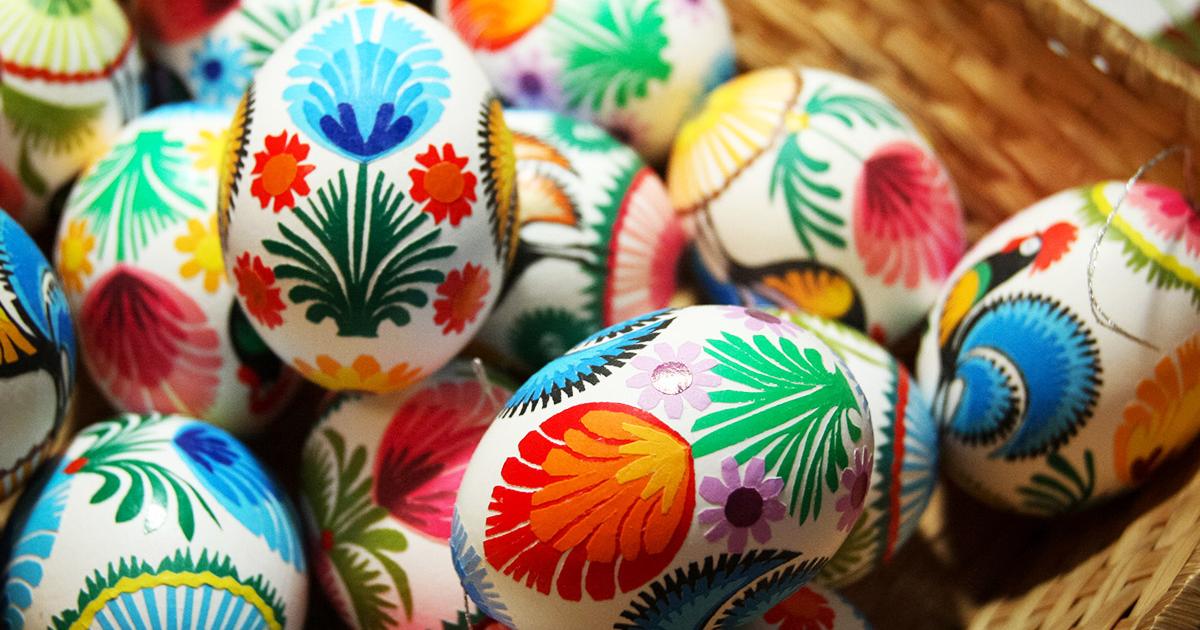
Easter Traditions in Different Continents
Easter Traditions in Different Continents
Easter brings fresh spring air, warmth, fresh green grass, beautiful tulips, and hope in this life and eternity. Many communities celebrate the resurrection of Christ by having their traditions that differ from continent to continent. It is a time of joy and celebration that comes after an extended period of fasting.
Beautiful Polish Pisanki, Europe
Traditionally, in Poland, we associate Easter with dyed and decorated eggs, called “pisanki”. We typically put them in the basket along with a piece of sausage, salt, pepper, a piece of bread, and chocolate, and decorate the basket with fresh catkins and a lamb figurine, the symbol of Jesus risen. We bring them to the table in the church and have them blessed by the priest on Saturday morning.
On Easter Sunday, we go to church, then meet our families, and have a delicious Easter breakfast.
On Monday, young boys pour water or perfume on women and girls. This Polish tradition is called “Smingus Dyngus”.
Easter Butterflies in Ethiopia, Africa
Thursday until Friday before Easter in Africa is named Maundy Thursday. The Africans decorate their churches in colorful clothes with butterflies and flowers. Church services are especially important parts of the celebration. In Ethiopia, Christian churches celebrate “Fasika” (Easter), which is 55 days of fasting from meat and animal products.
The night before Easter the Africans go to Easter vigils to commemorate the resurrection of Christ.
Longer fasting means they celebrate Easter longer. In the morning you will hear the music everywhere and people will dance and celebrate this day with joy.
On Easter Day they wear white, traditional clothing and attend a long church service lasting until early in the morning. Then, they come back home and break the fast with spicy and buttery chicken stew.
Mary’s Black Veil in the Philippines, Asia
In the Philippines, Easter is a major holiday that lasts four days of the Holy Week. It is time for atonement and reflection. Even the TV and radio stations go silent! During this time some holy rituals are done to cure illnesses.
On Easter Sunday women and men create two separate processions called “Salubong”. Men follow the picture of Jesus rising from the dead, and women follow the image of Mary wearing a black veil. Then women and men meet at the same church, which represents Mary comforting Jesus after he rises from the dead. Girls are wearing angel costumes at Easter. The doves or balloons remove Mary’s veil. If the removal of the veil is hard, bad luck will follow next year. After the church people celebrate this day with firecrackers and food feasts. The food contains meat dishes such as pork or chicken adobo (tender and flavourful chunks of pork or chicken simmered in a garlicky and vinegar-based soy sauce), sinigang na baboy (is a sour and savoury soup made of pork, tomatoes, onion, and tamarind broth), pancit canton (a stir-fried noodle dish with vegetables and slices of pork).
Colorful Kites in Bermuda, America
In Bermuda, people fly kites on Good Friday. This tradition started with a very smart teacher who was trying to explain to his students about Jesus ascending to heaven. He flew a kite with the name Jesus and let it go soaring into the sky.
Happy Easter Akademos Students! May this time bring you joy and a wonderful time with your families!
Vocabulary
eternity – infinite time (wieczność)
resurrection – Christ’s rising from the dead (zmarchwychwstanie)
fasting – abstain from all kinds of food or drink, especially as a religious observance (post)
catkins – a long thin, soft flower that hangs on some trees, e.g. birch trees and hazel trees (bazie)
Maundy Thursday – Holy Thursday, a Christian holy day that commemorates events known as the Washing of the Feet and the Last Supper (Wielki Czwartek)
vigil – a period of keeping awake during the time usually spent asleep, the eve of the holy day as an occasion of religious observance (czuwanie)
atonement – reparation for sin (pokuta)
veil – a piece of fine material worn by woman to protect her face (welon)
firecracker – a usually paper cylinder containing an explosive and a fuse and set off to make a noise (petarda)
simmer – stay just below the boiling point while being heated (gotować na wolnym ogniu)
kite – a toy consisting of light frame with thin material stretched over it, flown in the wind at the end of a long string (latawiec)